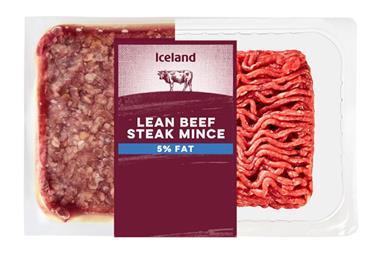The Grocer's labels quiz highlighted the lack of consensus on what is an effective label. The industry needs to strike a common sense balance
So, how did you all get on in the label quiz ('Think you know your labels?', The Grocer, 18 August, p28)? I was chuffed with my score, falling into the not-bad category, but confess to falling well short of the Dame Deirdre Hutton mark for food logo aficionados.
The ensuing flurry of letters to the editor illustrated the difficulty of getting consensus on how best to provide information on food labels to consumers. This will be made more difficult by pressures to add more information on animal welfare and environmental standards. Surely it's time to step back and apply common sense.
I'm not saying we should give up on improving the quality and clarity of information presented. In the Danish meat industry, we have fully supported British agricultural organisations advocating the case for greater transparency regarding food provenance. We all have a duty to provide meaningful information. But we have now reached a tipping point of information overload on food labels.
The function of a label is to communicate necessary and relevant information accurately and effectively. Food products require a label featuring certain statutory information and may also provide a statement of quality standard, for instance. But does the restricted space on food labels really offer the scope to do justice to the complexities of what constitutes good practice in animal welfare and environmental impact without oversimplification?
DEFRA recently launched a consultation on introducing more labelling information regarding the welfare of animals. Similar discussions are taking place at EU level. The definition of what is good or acceptable welfare is possibly even more subjective than the debate about the links between diet and health that has polarised our industry over the past two years. Can this information be distilled sensibly into a simple traffic-light or scoring system on a food label? I think not.
We seem to be racing to get carbon labels onto supermarket shelves. But major issues need to be resolved, and further research needs to be done, before any credible system can be introduced. There is a case for looking not just at a climate footprint but a broader carbon footprint that goes beyond the limited assessment of carbon dioxide or other greenhouse gasses. This is especially relevant to the meat and dairy industries, where greater efficiency may often lead to less impact on the environment.
In the case of livestock production, this could mean that more intensive, less welfare-friendly systems are more sustainable. A wider, debate needs to take place before another labelling initiative finds its way onto food labels.
While the DEFRA research suggested that many consumers are already baffled by information overload on food labels, other research has indicated that more consumers are interested in how food is produced. A common-sense balance needs to be struck.
We must be ready to reject oversimplified solutions and focus on providing relevant, objective information through the many alternative channels available today, and make it possible for consumers to access robust and impartial information.
Otherwise, we will just bamboozle consumers with cluttered information and meaningless images. Even worse, our parochial food industry squabbles about labelling may start to undermine consumer trust.n
John Howard is marketing director, Danish Bacon and Meat Council













No comments yet